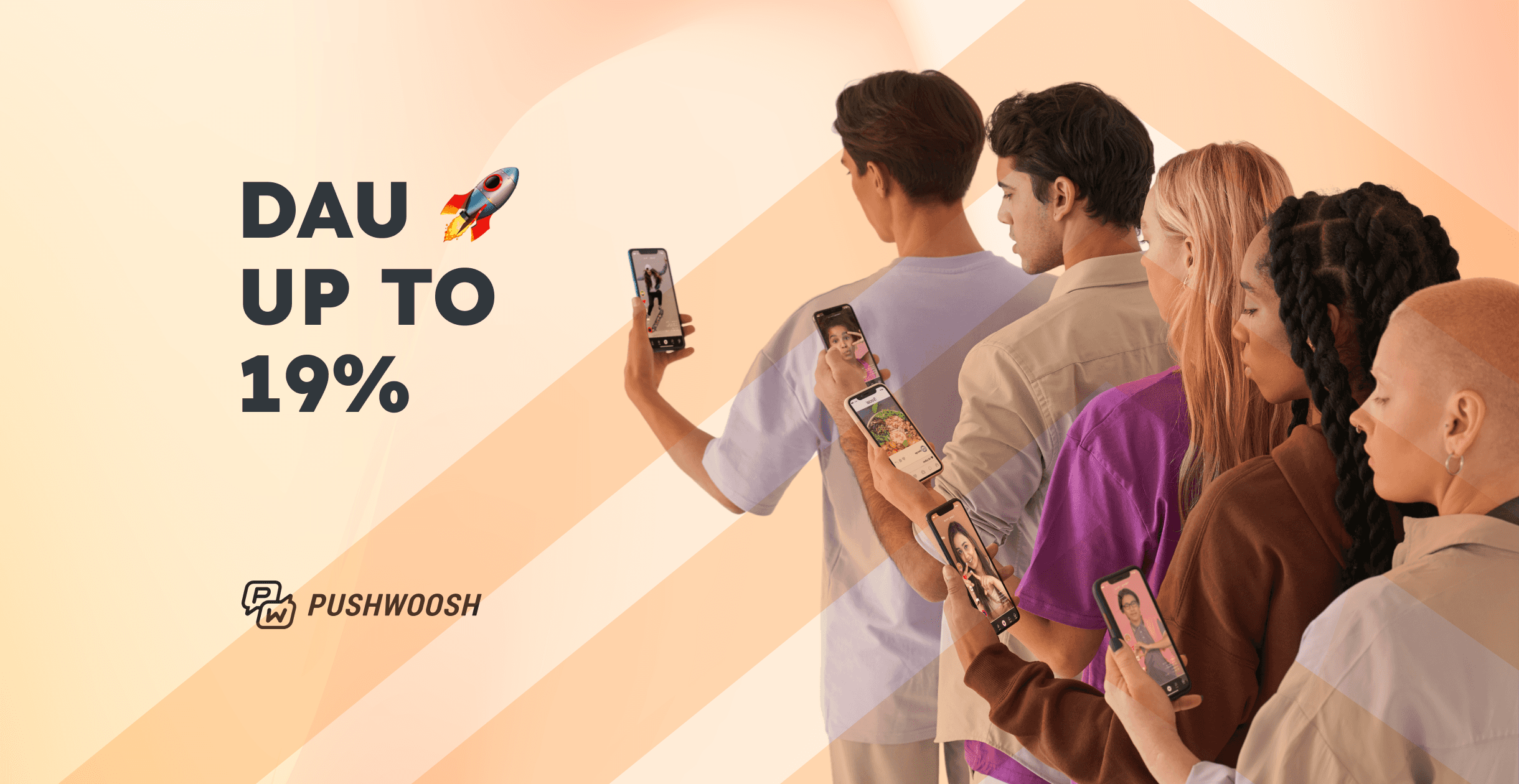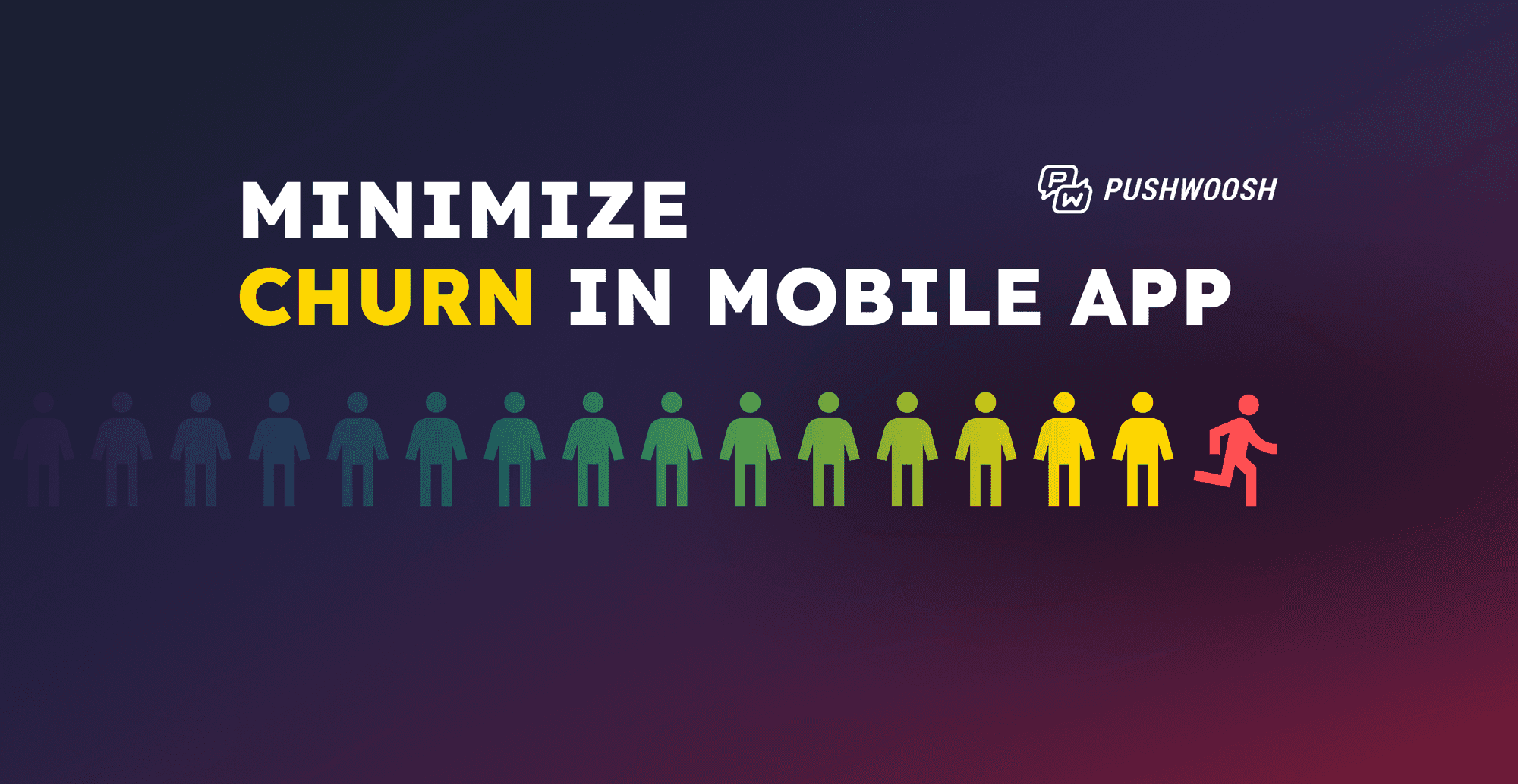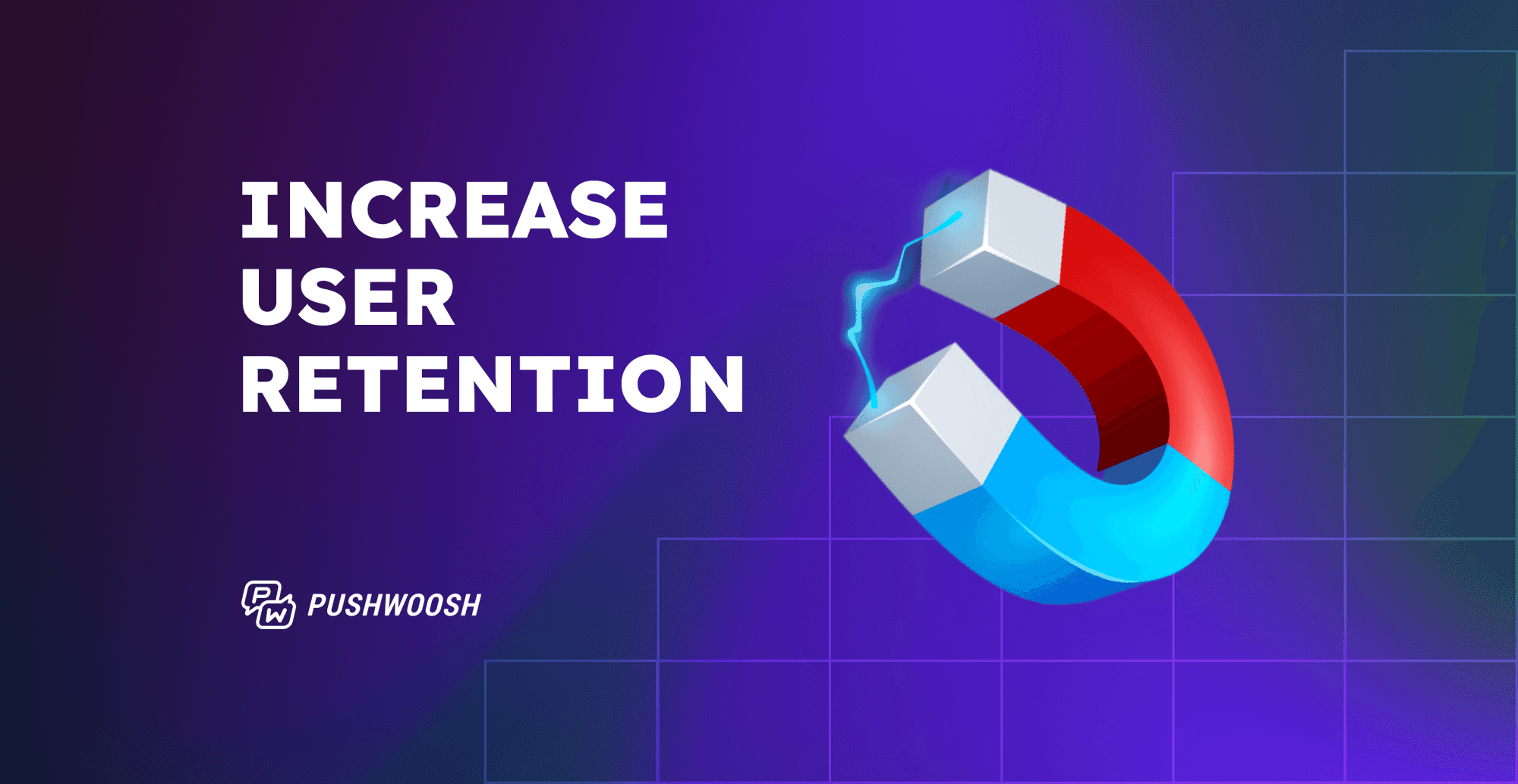Mobile marketing opportunities and challenges: What marketers talk about
Mobile marketers are not all the same. Depending on the industry and users, their goals and challenges change a lot. We’ve talked to mobile marketers and industry experts to find out how mobile lifecycle and retention specialists across the globe work with their users to achieve their goals.
TL;DR: Non-mobile-first (e-commerce, travel, etc.) mobile marketers aim to drive more purchases, while gaming (including the betting and casino segments) marketers aim at retention.
Read on to learn about their success stories and failures, target segments, experiments, and metrics that can help you improve your own strategy.
But first, who did we talk to? Lifecycle marketers, retention specialists, and project marketing managers from Canada to India.
We divided our participants into two cohorts, depending on their goals and approaches:

Insight: Goals, metrics, and approaches of marketers in gaming, betting, and casinos are similar.
Roles also depended on the industry a marketer worked in: the lifecycle role prevailed in non-gaming, while retention specialists were more popular in gaming and betting. Talking to project marketing managers brought us to another insight:
Insight: In smaller gaming teams, retention is a team goal, so even a project manager knows successful cases, metrics, and other tricks.
Now, we can dig into strategies that both cohorts use to tackle these challenges and achieve their goals (measured by the metrics).
Approaches for achieving the dream metrics
1. Using all possible channels to reach out to users
No matter the industry, all marketers want to remind users about their apps. Among various channels for retention, non-gaming marketers mentioned emails, push notifications, and WhatsApp. At the same time, gaming marketers mentioned push notifications, SMS, in-apps, social media, communities, along with emails and phone calls.
Insight: Email is still the most frequently mentioned marketing channel. All the marketers we talked to expected it to be the cheapest one.
2. Understanding the value of content
In case of hobby or lifestyle apps, content can be a deal-breaker. One of our interviewees achieved the highest open rate and retention (we can’t disclose the exact numbers) by combining research about user interests with daily push notifications about new content.
🌟See an example of content that Sport1, a Pushwoosh customer, sends via push notifications.
The same strategy works for gaming. Some teams use push notifications and in-game alerts together to notify players about new events, challenges, and content updates.
🌟Read how Bladestorm uses push notifications and in-apps to notify players about new skins and inventory.
Insight: Marketers from both cohorts struggle with creating content that converts. This is best achieved by understanding user activity/segmentation.

App Marketer of the Year & 2x Consultant of the Year | Founder @ Aperture
To create onboarding flows with messages that convert, start with one simple step: talking to your customers. Understanding their goals when using your product is crucial. Internal hypotheses are useful, but the real insights come from customer language.
For instance, at Curio, we invested time in deeply understanding our customers. We discovered that people used the product to have better conversations, deepen relationships, and seem more interesting. So, when I wrote the line “become the most interesting person in the room,” it resonated and converted.
Don’t assume you know what your users want. Ask them. Listen carefully. Then craft your messaging using their own language.
3. Identifying when and why users bounce
A quote from a gaming project manager: “We encountered challenges with improving retention beyond the initial 29 days (D29) of gameplay. Despite implementing various strategies, we observed that the retention rate at this stage did not improve as anticipated. Upon reflection, we recognized that this could be attributed to broader shifts in the lifecycle of casual games over time. The gaming landscape is dynamic, with evolving player behaviors and preferences potentially impacting traditional retention tactics.”
4. Understanding whether it’s worth investing into churned users
Churn appeared to be a contradictory topic. While all the non-gaming marketers we talked to put in significant efforts into user retention, some gaming marketers prioritized acquisition instead.
Compare the two approaches:
Scenario 1: A retention marketer of a hobby app uses winback discounts for churned users coupled with fresh daily content.
Scenario 2: A retention marketer of a betting app uses AI phone calls to reactivate the audience with minimal effort. Those who respond to the autocalls will qualify for further, person-to-person communication.
All in all, the decision about whether to try to retain or let go depends on multiple factors. Among the key factors, we see the CPA/CRC ratio: What would be more expensive—to acquire a new audience or to retain the existing one?
🌟Learn how Pushwoosh users combine Amplitude with Pushwoosh to prevent churn.
Insight: In some cases, such as hypercasual games, churn is viewed as more expensive than acquisition.

Growth, Monetization & Lifecycle Marketing @ Flo Health
Retention is the key metric to focus on once you have a substantial user base, as it significantly impacts acquisition and monetization in the long run. To boost acquisition with your existing users, implementing a strong referral system that nudges or incentivizes users to refer others is essential.
In 2024, leveraging data to personalize communication, utilizing multichannel communication, and experiments are crucial strategies. Personalized communication ensures that messages resonate with users, while multichannel approaches reach users wherever they are.
5. Identifying profitable segments
Both non-gaming and gaming marketers admitted that they prefer to send incentives to segments of users who are willing to pay for their app. This segment is pretty quick to identify if you have an in-house analytics team at your disposal. However, 90% of the non-gaming marketers we spoke with struggled to collect user data and had to wait at least three months for development support.
Insight: Lifecycle marketers often have to deal with technical settings on their own due to a lack of availability from their development teams.

Senior CRM Manager at Wolt | Mobile Growth Consultant
From working in-house and as a growth consultant, I’ve noticed that the relationship between lifecycle marketing teams and development teams is crucial. Unfortunately, this relationship is often overlooked as a decisive factor when leveling up your engagement tools to their full potential.
Lifecycle marketers depend on development teams to ensure the technical implementation of the tools. From the initial integration stage to setting up analytics and tracking, lifecycle teams are almost always dependent on development teams. It’s important to ensure this process is well-coordinated between both teams.
Once the initial setup is done, the question of maintenance comes up. With the implementation of automation, troubleshooting issues, updating features as needed, and adapting to the ever-growing business needs of several teams, further implementations are often necessary. And lifecycle teams probably won’t have the know-how to do it independently. What then?
Here are some actionable tips to consider:
- Cross-functional approach: Continuous involvement of both teams is crucial for efficient operation. Planning together, having regular updates, and shared objectives can make a big difference in prioritizing and understanding the impact of new projects.
- Clear documentation: Creating clear and comprehensive documentation can be a game-changer. Empowering marketers to troubleshoot issues independently allows development teams to focus on more impactful technical bottlenecks.
- User-friendly tools: Investing in user-friendly tools can reduce the need for constant developer assistance. With tools increasingly focusing on no-code solutions, opting for these can reduce reliance on development teams for minor issues, freeing up valuable development time.
That’s why having the ability to create user segments without technical help is so important for lifecycle marketers.
🌟Learn how Pushwoosh users create user segments out of the box.
6. CRM is the key
Most marketers we spoke with used one type or another of CRM software. Some teams used external tools to store user data, while others built in-house CRM systems to send all communication from one place.
A quote from a marketer in gaming: “We identified a segment of subscribers who had previously engaged with our game but became inactive over time. By leveraging CRM data, we tailored personalized push notification campaigns to encourage them to return to the game.”
While some marketers admitted that their built-in CRM ‘was very labor-intensive and could, in certain situations, require coding,’ one of the project managers we talked to suggested thinking twice before purchasing out-of-the-box user engagement software. Evaluation criteria should include the tool’s ‘complexity, cost, integration issues, and customization limitations.’

Co-Founder & Head of Growth @ Replug
Effective segmentation in mobile CRM is important for improving conversion rates and ensuring users receive personalized, relevant messages without feeling overwhelmed. If you combine insights from user activity and attributes, you can create a more tailored and engaging experience.
For example, in an in-app purchase scenario, targeting female users (attribute-based) interested in sports equipment (activity-based) with specific discounts on related products can significantly improve engagement. Such dual-parameter approach ensures your messages are both relevant and timely.
Another example would be sending a discount code to users who haven’t used one before, or targeting users who have never made a purchase.
Additionally, using user attributes also enables deeper personalization, like incorporating the user’s name in messages or sending a happy birthday greeting, which greatly boosts engagement and strengthens the connection with your app. Without segmentation, communication feels generic and fails to resonate with users on a personal level.
7. Finding the balance between players who appreciate and those who don’t appreciate bonuses
This is a very specific casino/betting case, although understanding the audience’s interests is valid in all industries.
Some players churn as soon as they experience bad luck because they want guaranteed rewards for a certain action. So marketers use ‘bad luck’ bonuses to extend their game time, and it works for them. Another segment of players may prove unresponsive to in-game rewards once they exceed daily limits. Marketers can suggest other forms of incentives to such users before they churn.
Segments and events examples
Now, let’s look at some segment and lifecycle sequence examples that our research participants shared with you, fellow mobile marketers.
Newly published apps
Most of the time, the marketers we talked to didn’t have sophisticated segmentation for newly published apps. They found it sufficient to have:
Segment 1: new users
Segment 2: active users
Example of a campaign: new user > in-app ‘allow push notifications’

Growth Manager @ AppAgent
Proper user onboarding is crucial. Here’s how you can optimize it:
- Educate, guide, solve formalities: Ensure users understand the unique selling proposition from the start.
- One-click sign-up: Simplify signing up or logging in to enhance accessibility and expedite interaction.
- Visuals: Use captivating visuals to explain features and benefits while showcasing your brand identity.
- Micro-interactions: Incorporate small animations or responses to user actions to add a delightful touch.
- Progressive disclosure: Reveal information progressively to prevent users from feeling overloaded.
- Personalization: Tailor the experience to each user’s interests to enhance engagement.
- Contextual prompts: Provide context-sensitive prompts to assist users as they navigate the app.
Check out AppAgent’s blog on new user flow types.
Freemium apps
Segment 3: registered users
Segment 4: free trial
Example of a campaign: new user > registered user > free trial
Send an in-app message during the user’s first session to incentivize them to register (points/bonuses).

Founder @ App Masters
The more you can retain your users, the more you’ll be able to spend to acquire a new user, or even better, have your current user base bring in more free users.
I’ll even go further and say focus on subscription conversion.
One client of ours is generating 1M downloads a month with 5M MAU. They tested adding a paywall during their first-time user experience and noticed an increase in retention and revenue: 60-80% of their buyers come during the onboarding experience.
They have an inherently viral app, so increasing the retention rate was their primary goal. But increasing the conversion rate for paying customers increased the app’s retention rate as well!
Apps with in-app purchases
Here, we are adding more events to keep track of the stages between the free trial/app discovery, the steps we take to persuade users, and the purchase.
Segment 4: activation event: added to cart, posted a job, tried a free lesson, etc.
Segment 5: made a purchase
Example of a campaign: registration > onboarding in-app > activation event > made a purchase

Founder @ App Masters
We have one more case study of a client who went from $250 to $1,000 a month with just 15 downloads a day. By focusing on subscription revenue, you increase retention and acquire more users.
To do the math here, 15 downloads a day = 450 downloads a month, which meant his break-even was just $0.56 per install ($250 / 450 downloads).
By optimizing his paywall and testing pricing, his break-even point increased to $2.22 per install. The $2.22 break-even rate makes the app a viable candidate for paid acquisition.
Apps with recurring purchases
Segment 6: churn
Segment 7: 2nd purchase
Example of a campaign: free trial > made a purchase > 2nd purchase > churn

Growth Manager @ AppAgent
Your paywall plays a major factor in converting users into paying customers. To optimize your paywall, consider the following elements:
- Strategic placement: Test the timing and location of the paywall for optimal visibility.
- Design: Introduce a pre-paywall page, enhance user communication, and implement a progression system within the paywall.
- Length: Compare the performance of detailed paywalls versus shorter versions.
- First Impression & USP: Experiment with different unique selling propositions focusing on clear benefits and use appealing designs.
- Plans & pricing: Use a price sensitivity meter to determine optimal pricing and experiment with packaging options.
These are the basics that the majority of our respondents mentioned. Additionally, some marketers stated they use way more sophisticated lifecycles. For example:
Betting app campaign: registration > welcome email > SMS activation > SMS/push bonus offer > received bonuses > became inactive > churned
Other app segment examples:
- Activity/Gameplay
- Become inactive/Churned
- Login/Time spent on site
- Frequency of financial activity
- Player skill level
- In-game behavior
- Spending habits
- Content preferences
Bottom line
Mobile industry is rapidly growing, but its channels and opportunities are very different from typical digital marketing. Mobile marketers have to focus on more channels than their digital colleagues, including app (and sometimes web) push notifications, in-app messages, emails, SMS, Whatsapp, along with community building, app store optimization, influencer marketing, etc.
To help you stay afloat in this competitive environment, we gathered a list of e-books and guides:




